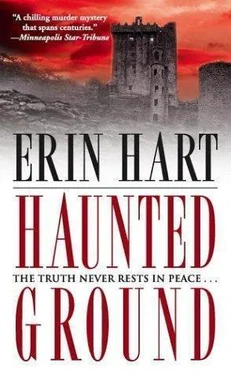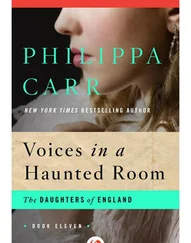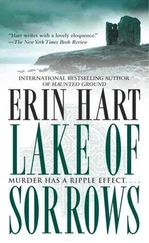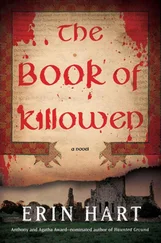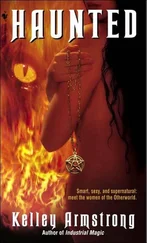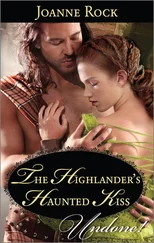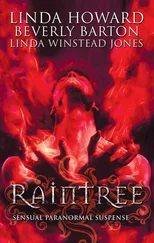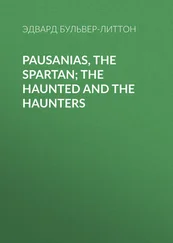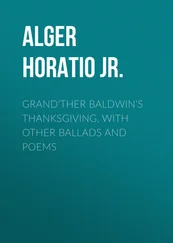As Cormac slung his map book under his left arm and gripped the worn leather handles of his site bag, he knew that what he saw in Jeremy’s face could have been reflected in his ten-year-old self a quarter-century ago. All the wishing in the world had not altered reality, and yet life had not ended. He had survived, and the wounds had eventually scarred over. If there were only some way he could communicate that hope to Jeremy Osborne. But he was here to dig. That was all.
Nora was waiting for a call from the National Museum when Cormac left the house, so he had set off for the priory on his own. As he nosed the jeep down Bracklyn’s shaded drive, he thought about how trees had come to be a sign of privilege in Ireland, their presence associated with the walled estates of the English and Anglo-Irish aristocracy. In some cases, the big houses were long gone, and only the trees and walls remained as a legacy of the landlord class. Outside the gates the woodland soon gave way to green pastures on either side. Almost at once, Cormac spied the gray stone ruins of ecclesiastical buildings off to his right, and he pulled onto the muddy gravel lane that led to the priory. Without all the equipment he had to transport, he might easily have walked the distance in ten minutes. The nearby fields had been fenced for cattle, and a large gate blocked the end of the lane. Osborne had arranged for an excavator to come this afternoon and clear away topsoil before they could begin on the test trenches. Slinging a camera over his shoulder and grabbing a notebook from his site kit, he climbed through the wire fence to have a look at the priory itself before making his walking survey and taking some pictures of the excavation site.
Osborne had said that Duchas maintained the priory, but from the state of the place, it appeared to be fairly low on the priority list. Someone had made a rather halfhearted attempt to arrange the fallen stones, and long grass grew up between them. The sweet scent of hay hung in the cool, damp morning breeze. Cormac shut his eyes and took a deep breath, letting his lungs fill with the fragrance. As much as he loved his work and enjoyed living in the city, he missed the sensory feast of the countryside. The ground was soaking from yesterday’s heavy showers, but the wind was pushing the clouds steadily across the sky, occasionally letting the morning sun break through. As he entered the cloistered square, he disturbed a flock of hooded crows, which took off in a great noisy, wing-flapping crowd.
Pillared archways were all that remained of the covered walkways, built to protect the monks from the elements as they went from church to work to sleeping rooms. The knee-high remains of storerooms, kitchen, and monastic cells lined the cloister’s outer rim. These stones, their worn surfaces incised with patterns, some carved into the shapes of dogs’ heads, had been laid by some monastic mason 850 years ago. There was a beauty, a rightness of scale in these old buildings that stirred some aesthetic appreciation in him, and a sense of wonder about the lives of the men who had lived here. Cormac looked into each room as he passed, imagining robed monks kneeling alongside the rude rush beds; working the surrounding fields; sharing a communal meal. At the base of one of the doorways, he knelt to take a closer look at a carving of a fernlike plant he could not name, perhaps six inches in height, its curling, pinnate leaves rendered in shallow relief.
He passed through an archway, its wooden door long ago removed or consumed by fire, and stepped into the nave of a small church. Though it was roofless and full of morning light, he imagined the echoes of medieval prayers offered in the chilly hours before sunrise every day of the year, and conjured the damp, visible breath of the Augustinian brothers as they knelt together in candlelight on these stones. In the niche left by a fallen crossbeam, he glimpsed the small figure of a sile na gig, an ancient fertility symbol. This one was typical: a wild-eyed female figure with splayed legs, her hands grasping at the outsized genitalia beneath her grotesquely swollen belly. Why these figures were often found among church ruins was an anthropological conundrum, often taken as a sign that Ireland’s pagan past had never really disappeared, only receded, and that Catholicism was only a modern facade on a much more primitive and atavistic religion. After snapping a photo, Cormac recorded the location of the figure in his notebook, and continued on his survey.
An opening at the far side of the chapel framed a small rectangle of green and a larger one of blue sky. Several lichen-covered gravestones tilted into the frame as well. Off in the far corner of the enclosure was a life-sized stone figure of Christ, streaked with rust and mottled with white lichen like the surrounding stones. Its feet were submerged to the ankles in grass dotted with tiny daisies. The left arm was missing entirely, and the right was broken in several places, leaving the iron rods that had once supported stone fingers curled into a rusty fist. Despite its ruined state, Cormac felt the vital energy in the figure’s naked torso, the sidelong droop of its head, and found himself strangely moved.
He backtracked to the graveyard. In among the antique graves were fresh stones; their polished surfaces and sharply incised lettering stood out against the weathered slabs from the eighteenth century and before. No doubt Hugh Osborne’s parents were buried here somewhere. Cormac crouched by one of the old stones and tried to read the inscription. Vegetation and damp had obscured most of the writing, but he could make out the name, Miles Gorman, and the dates, 1604 to 1660. He reached out to touch the ruffled, papery-dry edges of the yellow-green lichen that bloomed on the stone.
“If you’re looking for the Osbornes, they’re all under the floor inside.” The gruff voice came from about three graves away. Cormac looked up, shading his eyes against the bright sunshine, and saw Brendan McGann silhouetted against the sky. He was in shirtsleeves, and carried a hay fork. Against the sunlight, Cormac couldn’t tell if Brendan’s eyes held mischief or malice. How long had he been there?
“Thought you’d packed off home,” Brendan continued.
“I did. But I’m back here on a job. Hugh Osborne’s asked me to—”
“That fucking squireen,” Brendan said, his face darkening. “Never had any use for this land the past twenty years. Then he sends me a letter saying he would be ‘obliged’ if I would shift my cattle from the pasture beyond within two weeks’ time.”
“Surely you knew about his plans for the site,” Cormac said. “He said your sister’s been involved—”
“He ought to be leaving this place alone. You can see for yourself how peaceful it is. What we don’t need is a lot of tourists coming around, gawping at us and clogging up the roads.”
Cormac found it hard to believe that an increase in traffic was really foremost among Brendan McGann’s concerns.
“Seems like this area could do with a bit of help—” he began, but Brendan cut him off again.
“We don’t need any help,” he said, looking at the ground, and the vehemence in his voice was suddenly alarming.
“The workshop seems to have a good bit of support,” Cormac said, “I gather—”
“I don’t give a fuck what you gather. If you were a wise man, you’d pack up right now and drive straight back to Dublin and let us settle things here on our own.” His words weren’t quite a threat, but the next thing to it.
“As soon as I’m finished here,” Cormac said, hoping he sounded calmer than he actually felt. Did Osborne have any idea of the animosity borne him so close to home?
“No good will come of this,” Brendan said, his muscles visibly tightening. “No good. You’ll see.” Then he turned and tramped stolidly away, leaving Cormac to wonder what kind of hornet’s nest he had stumbled into here. There were Osborne’s missing wife and child, perhaps the victims of foul play; young Jeremy Osborne’s self-destructive bent; and now Brendan McGann’s seething hatred of his neighbor. He thought back to the way Brendan had glared at Osborne out on the bog, and the look on Una’s face as she defended Hugh against whispered accusations about his wife’s disappearance. Maybe that was it—Brendan believed, or at least harbored a strong suspicion, that his sister was involved with Hugh Osborne. And maybe he wasn’t the only one—hadn’t Fintan said that he wished Una would wise up?
Читать дальше
